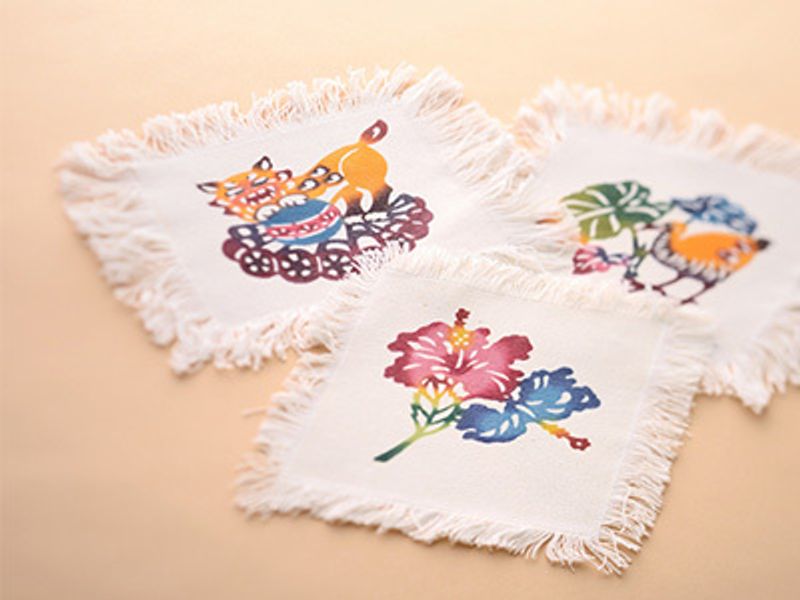Feb 26, 2018
Bingata resist dyed fabric
You probably can't tell from my posts on here, but any of my friends in Japan could tell you that I am obsessed with fabric. I love making things and sewing, but I just love beautiful things and Japan is most certainly the country for finding gorgeous fabrics. "Made in Japan" is a tag I enjoy finding on my fabric and I have come to expect it from the richly colored pieces of cotton I can pick up in any fabric section. However, recently in my search of all things Okinawa, I stumble across another aspect of Okinawa culture that draws me even closer to this beautiful set of islands and what was once was the kingdom of Ryuukyuu.
Okinawa has a rich and colorful history. It also has a rich and colorful textile tradition. As a crafter and person who can’t help but hoard fabrics that catch my eye, Okinawa's whole field of textile making has certainly caught it.
Bingata 紅型, resist dyed fabric

The name is made up of "紅," the word for "crimson" or "vermillion." You know that bright red that Japan is known for? It is seen on the torii gates and on shrines. It is the bright red circle of the Japanese flag. But bingata isn't red. No, instead it has that bright red as a part of it as well as many many other bright colors, most primary colors, so everything pops out in a colorful masterpiece.
And what a masterpiece every bingata dyed piece is. Each one is painstakingly colored in by hand, the dye being worked into the fabric over a glue that protects the other parts from the colors bleeding. This means crisp lines and vivid color. Depth is given by dying over the parts that have dried with darker shades. It is truly magnificent how much time and skill goes into one small piece of fabric.
There are two ways bingata is made, one with a hand carved stencil and the other by applying the glue by hand.
This video by the Shrioma Bingata Studio has an amazingly detailed explanation of the two techniques but unfortunately is only in Japanese. She talks about the dried tofu she uses as a base for cutting the stencils and applying the glue and applying the color. Even if you can't understand everything, you can still see just how much is put into this beautiful art.
But you don't have to just listen to me appreciate about how amazing bingata is. Go to Okinawa and experience it yourself. There are many places where you can take workshops on the different techniques and shops selling the work of various fabric artists.
Shuri-ryusen is one of those places recommended to me by a friend who lives in Naha, Okinawa. He told me that the staff is friendly and helpful. Also if you don't speak Japanese this is the easiest place for smooth communication. Their website is in English so making an appointment is a breeze.
Another recommendation is the bingata studio at Okinawa World . The Japanese site has more information including prices which range from 1,000 yen to 1,800 yen depending on what item to choose to dye. 



0 Comments